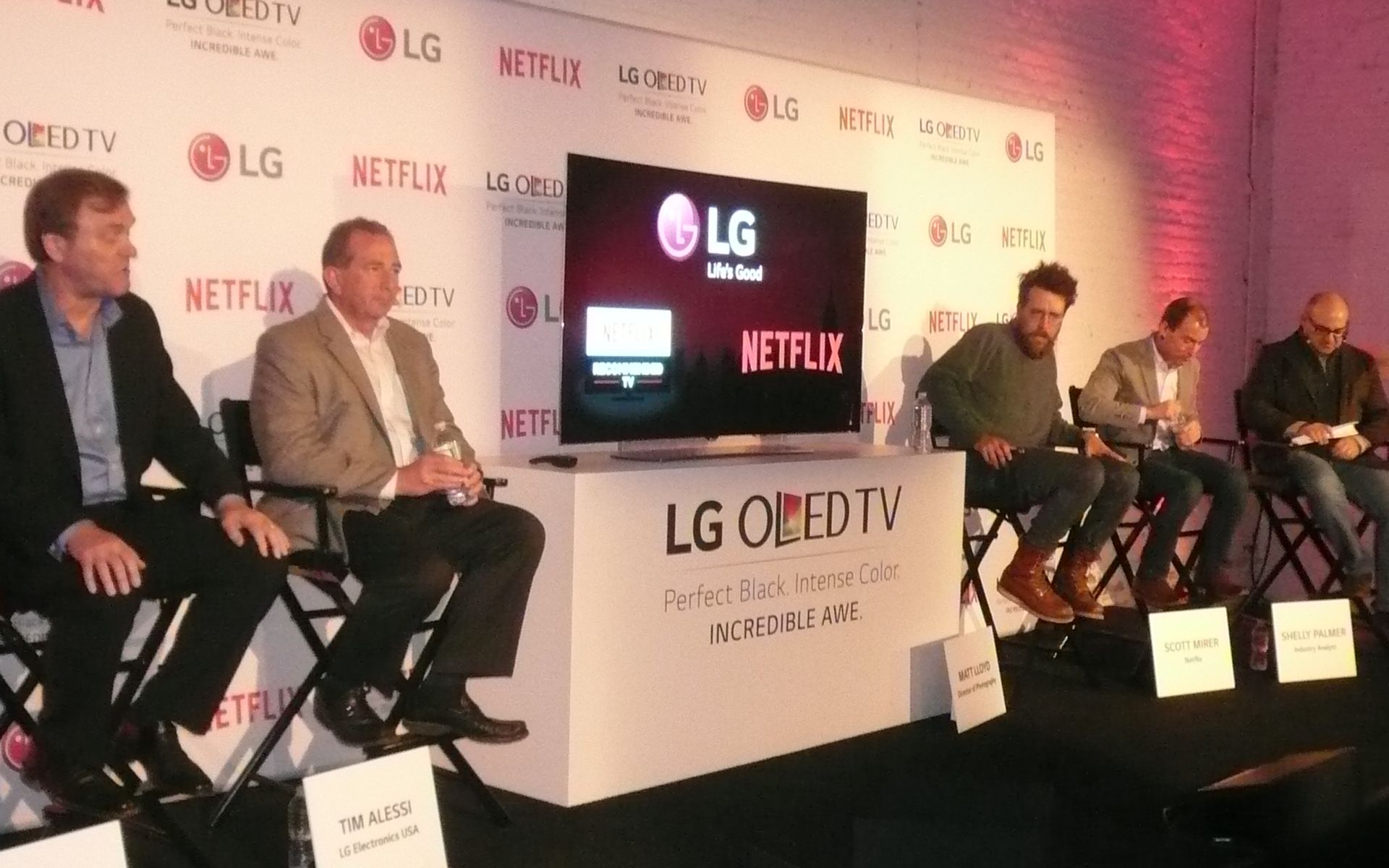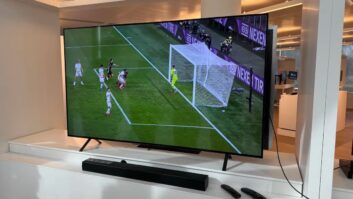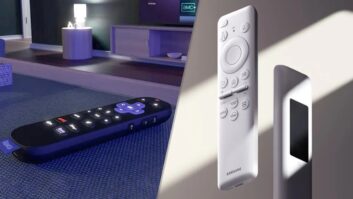
New York — OLED display technology not only reproduces the perfect blacks that LCD displays can’t deliver, but OLED technology is capable of displaying HDR (high dynamic range) content to its fullest potential when the home HDR standard is finalized, LG product developer Tim Alessi told the press today during an LG-sponsored panel.
During the session, Netflix VP Scott Mirer said he expects the HDR standard to be finalized “shortly” and hopes to stream HDR content late this year.
During the session, panelists testified to the advantages of OLED technology over LCD displays. “Black sets the foundation for color and brightness,” Alessi said. Perfect black “delivers any requirement of HDR,” he added. It’s not certain, however, whether current-generation OLED TVs will handle future HDR content, but OLED display technology itself is capable, he later told TWICE.
Matt Lloyd, photography director for the new Marvel “Daredevil” series on Netflix, pointed out that pure black means no luminosity. He showed clips from the new series, premiering Friday on Netflix in 4K, on an LG OLED 4K TV. “I’ve not seen anything comparable to it, even in the color suite, from pure black, all the way to 100 percent luminance,” he said of OLED. “To be able to look at something on set and make the decisions we made, knowing and trusting they would look like that on this screen, is incredibly empowering.”
Video-display consultant Pete Putman of Roam Consulting pointed out that OLED displays are emissive like plasma displays, thus delivering the widest viewing angles. The technology also delivers accurate saturated colors and accurate shades of gray, and it accurately reproduces hard-to-reproduce pastels, he said. Details in shadows also spring to life.
“Black is important, no question, as well as grayscale reproduction,” Putman said. “For every shade of gray that you can see, there are thousands of possible color combinations. OLED gives you the grayscale reproduction to see all of those color combinations from deep black to full white.”
Deep blacks are also needed to deliver HDR, he said, pointing out that cameras are now capable of catching 15 stops of light.
For his part, Alessi noted that an OLED panel’s life span with normal use is 30,000 hours before the panel degrades to half brightness, or about 20 years of use every day for six hours per day. That’s well beyond the normal TV-replacement cycle, he said.
He also noted that after almost two years on the market, OLED displays haven’t developed problems with “temporary image retention,” or burn-in. A static image would have to be on an OLED TV for days at a time for any problem to occur, and LG’s OLED TVs use feature technologies that mitigate the problem by, for example, ratcheting down the brightness of static images after a period of time.
On related topics, Netflix’s Mirer was asked about the expected launch of 4K Blu-ray discs and whether the format will fly. “Consumers will decide if physical media still has legs” and whether “picture quality will carry it forward,” he responded.
Mirer called smart TVs “the tip of the spear” to bring 4K to consumers, acknowledging that among dedicated media streamers, only a Sony model offers 4K streaming. “The ecosystem will work itself out,” and eventually streamers will upgrade to the latest technology, he said.
A majority of Netflix’s new live-action content is streamed in 4K Ultra HD, with about a third of all Netflix live-action content available in 4K, he told TWICE.
To date, LG is the only company producing OLED TVs, having launched 1080p models in 2014 and planning in the coming weeks to ship its first two 4K Ultra HD OLED TVs, both with curved screens. Those two include the 65-inch $8,999-UPP 65EG9600, rolling out this month, initially to Magnolia Home Theater and Magnolia Design Centers stores and very soon after to other retailers. The 55-inch 55EG9600 at $5,499 will be available in May.
Other 4K OLED TVs announced by LG at International CES will ship sometime in the second half, with possible announcements made during the CEDIA Expo, Alessi said.
For 2015, the company plans 11 OLED models, including one carryover FullHD OLED, many with curved screens. A new flagship 77-inch 4K OLED model will feature a “flexible” 4K OLED screen for people who want the option of both a curved and flat screen.
OLED’s launch is a “once-in-a-decade moment,” said LG USA president/CEO William Cho before the panel got underway. Other TV-set makers have tried and failed to deliver consumer OLED displays, he noted.
In other comments, LG said the Web OS interface on in its 2014 smart TVs will be upgraded via a free firmware update to add most of the capabilities of Web OS 2.0, which appears in LG’s 2015 smart TVs. LG estimates the update will be available in July.
Web OS 2.0 enables quicker startup when the TV is turned on, faster switching between apps, and setting options that appear on the right side of the screen as program plays on the left. Settings include picture settings, input switching and the like. Web OS 2.0 also lets users embed favorite cable- and satellite-box channels into the TV’s onscreen UI for quick access to live TV.













